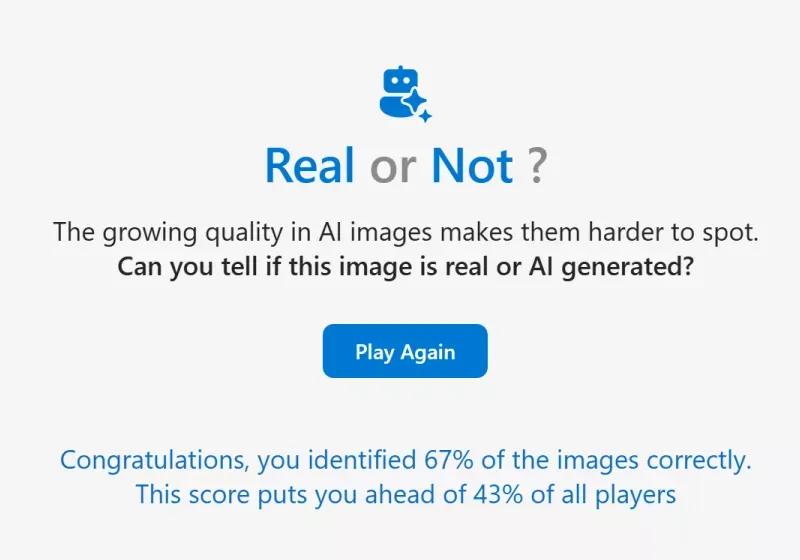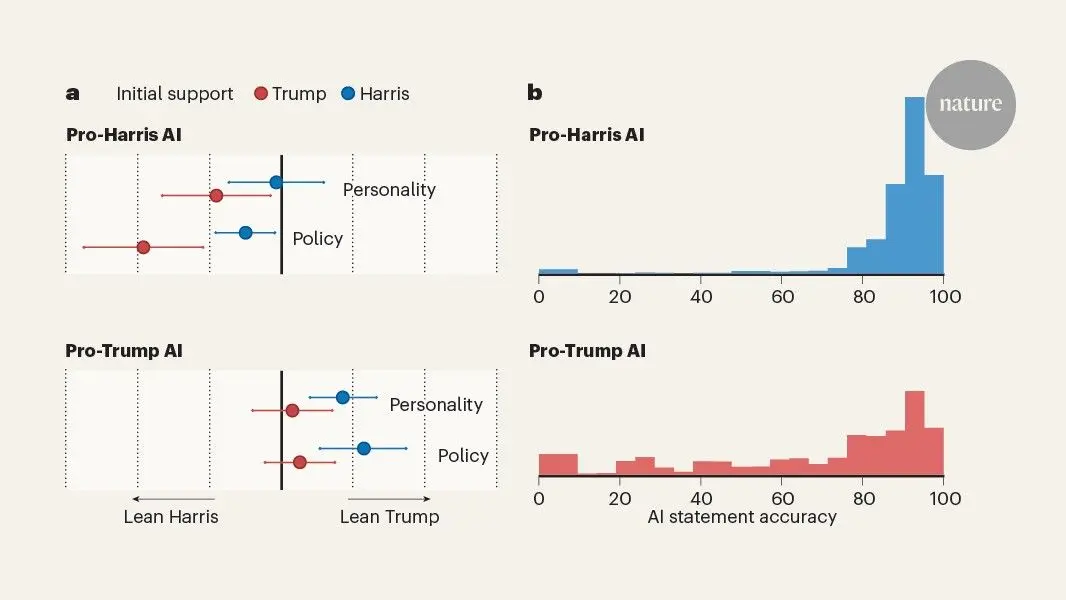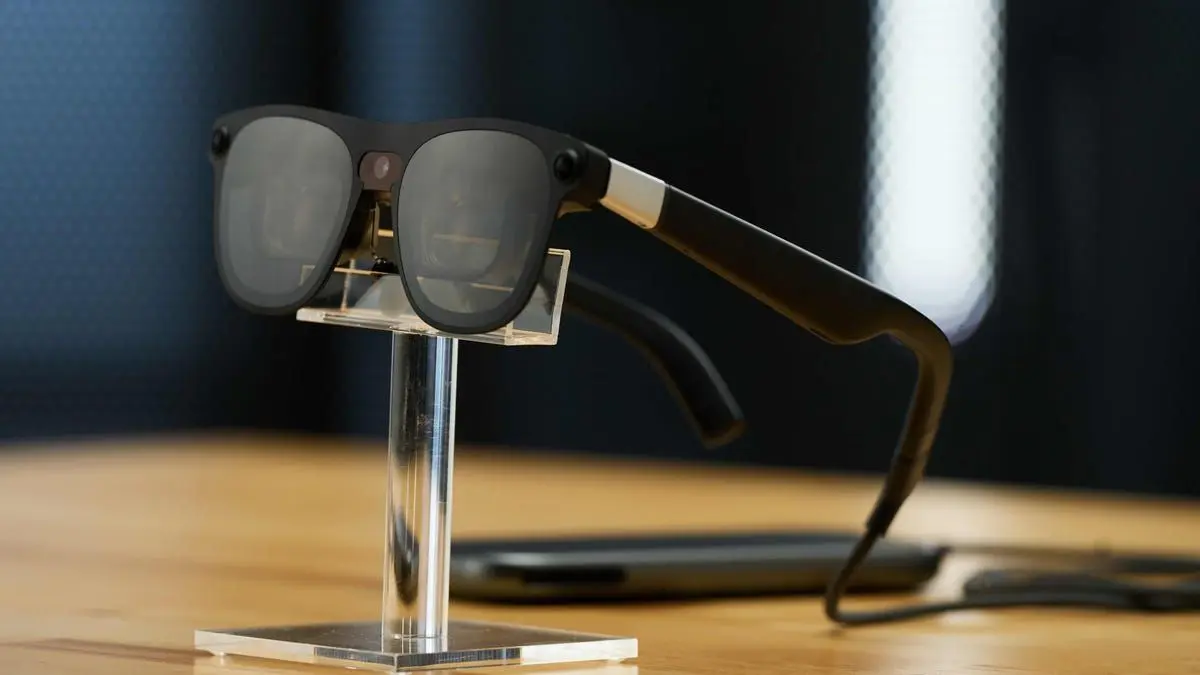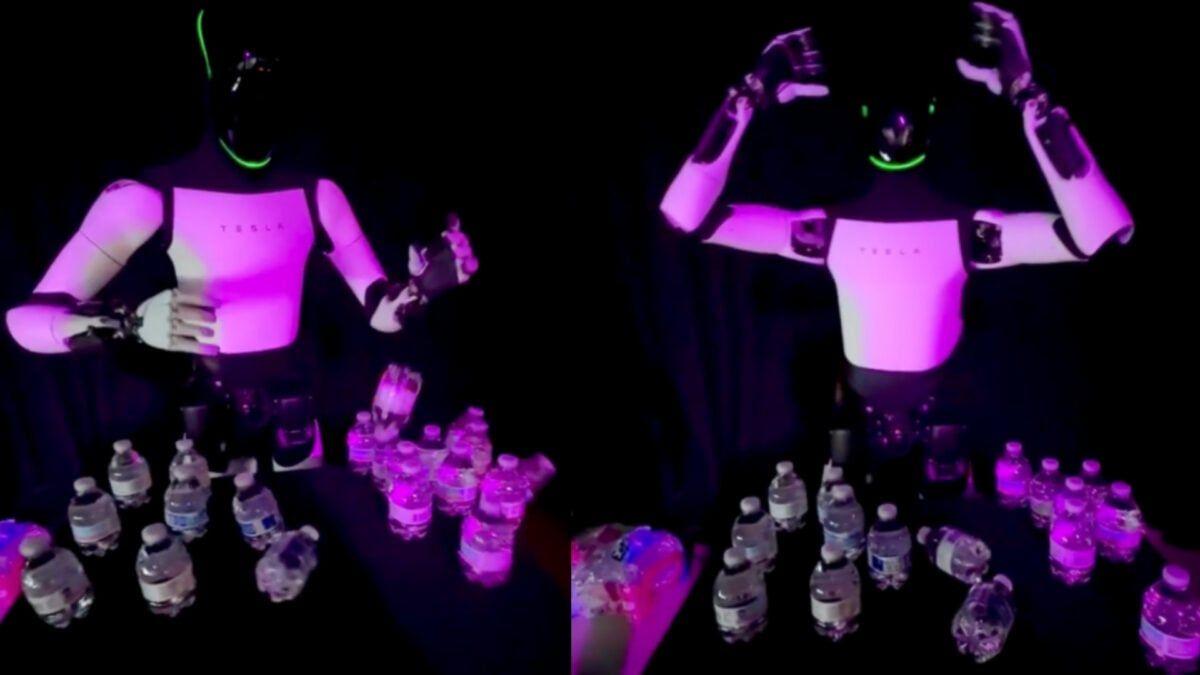AI-Generated Historical Photos Raise Concerns Over Authenticity and Historical Accuracy
4 Sources
4 Sources
[1]
Fake AI history photos cloud the past
A wave of touching photos showing great moments in time is fascinating amateur historians online. The problem? They are not real -- and may be clouding our view of the past. Widely shared on social media, the atmospheric black and white shots -- a mother and her child starving in the Great Depression; an exhausted soldier in the Vietnam war -- may look at first like real historic documents. But they were created by artificial intelligence, and researchers fear they are muddying the waters of real history. "AI has caused a tsunami of fake history, especially images," said Jo Hedwig Teeuwisse, a Dutch historian who debunks false claims online. "In some cases, they even make an AI version of a real old photo. It is really weird, especially when the original is very famous." One photo shared on Facebook shows a pair of fresh-faced young men posing in front of an antique biplane: purportedly Orville and Wilbur Wright at the time of their first powered flight. But those are not the Wright Brothers. Real archive shots from the time show mustachioed Orville and his taller brother Wilbur in flat caps, looking nothing like the blond pair in the sepia-hued AI image. Hiroshima reproduction Among the images created using Midjourney, a popular AI online image generator, is a series of fake reproductions portraying the moment when the suspected assassin of president John F. Kennedy, Lee Harvey Oswald, was himself shot dead by Jack Ruby in 1963. Other images on Midjourney purport to show the explosion of the atom bomb over Hiroshima in 1945, the invasion of Prague by Soviet-allied troops in 1968 and even a vision of the Roman Coliseum in ancient times. "They often focus on events from too long ago to have been photographed or on moments that are poorly documented," said Marina Amaral, an artist who specializes in adding color to black and white photographs. "This creates a risk of false visuals being accepted as fact, which could, over time, distort our understanding of history and weaken public trust in visual evidence as a reliable source for learning about the past." Spotting fake images For now, Amaral and Teeuwissen believe they can still tell fake historical images from real ones just by looking at them. AI-generated photos often have tell-tale glitches: too many fingers on a hand, missing details -- such as the lack of a propeller on the Wright brothers' plane -- or, on the other hand, compositions that are too perfect. "AI-generated pictures can recreate the look, but they miss the human element, the intent, the reason behind the photographer's choices," said Amaral. "They may be visually convincing, but they're ultimately hollow." For Teeuwissen, "real photos are made by real people and there's usually something that's out of focus, or someone looks silly by accident, the makeup looks bad, et cetera." But she judges it is "only a matter of time" before the quality of the AI image makes fakes hard to detect with the naked eye -- a "dangerous" prospect, she says, which would amplify disinformation.
[2]
Fake AI history photos cloud the past
Widely shared on social media, the atmospheric black and white shots -- a mother and her child starving in the Great Depression; an exhausted soldier in the Vietnam war -- may look at first like real historic documents. But they were created by artificial intelligence, and researchers fear they are muddying the waters of real history. "AI has caused a tsunami of fake history, especially images," said Jo Hedwig Teeuwisse, a Dutch historian who debunks false claims online. "In some cases, they even make an AI version of a real old photo. It is really weird, especially when the original is very famous." One photo shared on Facebook shows a pair of fresh-faced young men posing in front of an antique biplane: purportedly Orville and Wilbur Wright at the time of their first powered flight. But those are not the Wright Brothers. Real archive shots from the time show mustachioed Orville and his taller brother Wilbur in flat caps, looking nothing like the blond pair in the sepia-hued AI image. Hiroshima reproduction Among the images created using Midjourney, a popular AI online image generator, is a series of fake reproductions portraying the moment when the suspected assassin of president John F. Kennedy, Lee Harvey Oswald, was himself shot dead by Jack Ruby in 1963. Other images on Midjourney purport to show the explosion of the atom bomb over Hiroshima in 1945, the invasion of Prague by Soviet-allied troops in 1968 and even a vision of the Roman Coliseum in ancient times. "They often focus on events from too long ago to have been photographed or on moments that are poorly documented," said Marina Amaral, an artist who specialises in adding colour to black and white photographs. "This creates a risk of false visuals being accepted as fact, which could, over time, distort our understanding of history and weaken public trust in visual evidence as a reliable source for learning about the past." Spotting fake images For now, Amaral and Teeuwissen believe they can still tell fake historical images from real ones just by looking at them. AI-generated photos often have tell-tale glitches: too many fingers on a hand, missing details -- such as the lack of a propeller on the Wright brothers' plane -- or, on the other hand, compositions that are too perfect. "AI-generated pictures can recreate the look, but they miss the human element, the intent, the reason behind the photographer's choices," said Amaral. "They may be visually convincing, but they're ultimately hollow." For Teeuwissen, "real photos are made by real people and there's usually something that's out of focus, or someone looks silly by accident, the makeup looks bad, et cetera." But she judges it is "only a matter of time" before the quality of the AI image makes fakes hard to detect with the naked eye -- a "dangerous" prospect, she says, which would amplify disinformation.
[3]
Fake AI history photos cloud the past
Widely shared on social media, the atmospheric black and white shots -- a mother and her child starving in the Great Depression; an exhausted soldier in the Vietnam war -- may look at first like real historic documents. "AI has caused a tsunami of fake history, especially images," said Jo Hedwig Teeuwisse, a Dutch historian who debunks false claims online.A wave of touching photos showing great moments in time is fascinating amateur historians online. The problem? They are not real -- and may be clouding our view of the past. Widely shared on social media, the atmospheric black and white shots -- a mother and her child starving in the Great Depression; an exhausted soldier in the Vietnam war -- may look at first like real historic documents. But they were created by artificial intelligence, and researchers fear they are muddying the waters of real history. "AI has caused a tsunami of fake history, especially images," said Jo Hedwig Teeuwisse, a Dutch historian who debunks false claims online. "In some cases, they even make an AI version of a real old photo. It is really weird, especially when the original is very famous." One photo shared on Facebook shows a pair of fresh-faced young men posing in front of an antique biplane: purportedly Orville and Wilbur Wright at the time of their first powered flight. But those are not the Wright Brothers. Real archive shots from the time show mustachioed Orville and his taller brother Wilbur in flat caps, looking nothing like the blond pair in the sepia-hued AI image. Hiroshima reproduction Among the images created using Midjourney, a popular AI online image generator, is a series of fake reproductions portraying the moment when the suspected assassin of president John F. Kennedy, Lee Harvey Oswald, was himself shot dead by Jack Ruby in 1963. Other images on Midjourney purport to show the explosion of the atom bomb over Hiroshima in 1945, the invasion of Prague by Soviet-allied troops in 1968 and even a vision of the Roman Coliseum in ancient times. "They often focus on events from too long ago to have been photographed or on moments that are poorly documented," said Marina Amaral, an artist who specialises in adding colour to black and white photographs. "This creates a risk of false visuals being accepted as fact, which could, over time, distort our understanding of history and weaken public trust in visual evidence as a reliable source for learning about the past." Spotting fake images For now, Amaral and Teeuwissen believe they can still tell fake historical images from real ones just by looking at them. AI-generated photos often have tell-tale glitches: too many fingers on a hand, missing details -- such as the lack of a propeller on the Wright brothers' plane -- or, on the other hand, compositions that are too perfect. "AI-generated pictures can recreate the look, but they miss the human element, the intent, the reason behind the photographer's choices," said Amaral. "They may be visually convincing, but they're ultimately hollow." For Teeuwissen, "real photos are made by real people and there's usually something that's out of focus, or someone looks silly by accident, the makeup looks bad, et cetera." But she judges it is "only a matter of time" before the quality of the AI image makes fakes hard to detect with the naked eye -- a "dangerous" prospect, she says, which would amplify disinformation.
[4]
Fake AI history photos cloud the past
PARIS (AFP) - A wave of touching photos showing great moments in time is fascinating amateur historians online. The problem? They are not real -- and may be clouding our view of the past. Widely shared on social media, the atmospheric black and white shots -- a mother and her child starving in the Great Depression; an exhausted soldier in the Vietnam war -- may look at first like real historic documents. But they were created by artificial intelligence, and researchers fear they are muddying the waters of real history. "AI has caused a tsunami of fake history, especially images," said Jo Hedwig Teeuwisse, a Dutch historian who debunks false claims online. "In some cases, they even make an AI version of a real old photo. It is really weird, especially when the original is very famous." One photo shared on Facebook shows a pair of fresh-faced young men posing in front of an antique biplane: purportedly Orville and Wilbur Wright at the time of their first powered flight. But those are not the Wright Brothers. Real archive shots from the time show mustachioed Orville and his taller brother Wilbur in flat caps, looking nothing like the blond pair in the sepia-hued AI image. Among the images created using Midjourney, a popular AI online image generator, is a series of fake reproductions portraying the moment when the suspected assassin of president John F. Kennedy, Lee Harvey Oswald, was himself shot dead by Jack Ruby in 1963. Other images on Midjourney purport to show the explosion of the atom bomb over Hiroshima in 1945, the invasion of Prague by Soviet-allied troops in 1968 and even a vision of the Roman Coliseum in ancient times. "They often focus on events from too long ago to have been photographed or on moments that are poorly documented," said Marina Amaral, an artist who specialises in adding colour to black and white photographs. "This creates a risk of false visuals being accepted as fact, which could, over time, distort our understanding of history and weaken public trust in visual evidence as a reliable source for learning about the past." For now, Amaral and Teeuwissen believe they can still tell fake historical images from real ones just by looking at them. AI-generated photos often have tell-tale glitches: too many fingers on a hand, missing details -- such as the lack of a propeller on the Wright brothers' plane -- or, on the other hand, compositions that are too perfect. "AI-generated pictures can recreate the look, but they miss the human element, the intent, the reason behind the photographer's choices," said Amaral. "They may be visually convincing, but they're ultimately hollow." For Teeuwissen, "real photos are made by real people and there's usually something that's out of focus, or someone looks silly by accident, the makeup looks bad, et cetera." But she judges it is "only a matter of time" before the quality of the AI image makes fakes hard to detect with the naked eye -- a "dangerous" prospect, she says, which would amplify disinformation.
Share
Share
Copy Link
A surge in AI-generated historical photos is causing concern among historians and researchers, who warn that these fake images could distort our understanding of the past and undermine trust in visual historical evidence.

The Rise of AI-Generated Historical Photos
A new trend in artificial intelligence is causing concern among historians and researchers: the creation of fake historical photographs. These AI-generated images, often shared widely on social media, depict significant moments in history with striking realism, leading many viewers to believe they are authentic historical documents
1
.Jo Hedwig Teeuwisse, a Dutch historian specializing in debunking false claims online, describes this phenomenon as "a tsunami of fake history," particularly in the realm of images
2
. The problem is not just the creation of entirely new images but also AI-generated versions of famous historical photographs, which Teeuwisse finds particularly disconcerting.Examples of Misleading AI-Generated Historical Images
One notable example is an AI-created image purporting to show Orville and Wilbur Wright posing in front of their biplane. This sepia-toned image depicts two young, blond men, which starkly contrasts with authentic archive photos showing the mustachioed Wright brothers in flat caps
3
.Other AI-generated images circulating online include:
- The assassination of Lee Harvey Oswald
- The atomic bomb explosion over Hiroshima in 1945
- The Soviet-allied troops' invasion of Prague in 1968
- A vision of the ancient Roman Colosseum
These images, often created using popular AI tools like Midjourney, tend to focus on events from the distant past or poorly documented moments in history
4
.The Dangers of AI-Generated Historical Images
Marina Amaral, an artist specializing in colorizing black and white photographs, warns that these AI-generated images pose a significant risk. "This creates a risk of false visuals being accepted as fact, which could, over time, distort our understanding of history and weaken public trust in visual evidence as a reliable source for learning about the past," Amaral explains
1
.Related Stories
Identifying AI-Generated Images
Currently, experts like Amaral and Teeuwisse can often distinguish between real and AI-generated historical images. They point out several tell-tale signs of AI-generated photos:
- Glitches such as too many fingers on a hand
- Missing crucial details (e.g., the absence of a propeller on the Wright brothers' plane)
- Compositions that appear too perfect
Teeuwisse notes that real photos often have imperfections: "There's usually something that's out of focus, or someone looks silly by accident, the makeup looks bad, et cetera"
2
.Future Implications
Despite their current ability to spot fakes, both Amaral and Teeuwisse acknowledge that it's only a matter of time before AI-generated images become indistinguishable from authentic historical photographs. This prospect is considered dangerous, as it could significantly amplify disinformation and further blur the lines between historical fact and fiction
3
.As AI technology continues to advance, the challenge of preserving historical accuracy and maintaining trust in visual evidence will likely become increasingly complex, requiring new approaches to digital literacy and historical verification.
References
Summarized by
Navi
[1]
[2]
[4]
Related Stories
Trump's AI-Generated Crowd Photo Sparks Debate on Misinformation and Public Trust
13 Aug 2024

Google Pixel 9's AI Magic Editor: Revolutionizing Photography and Raising Ethical Concerns
24 Aug 2024

Microsoft Study Reveals Humans Struggle to Distinguish AI-Generated Images from Real Photos
30 Jul 2025•Technology

Recent Highlights
1
AI Chatbots Sway Voters More Effectively Than Traditional Political Ads, New Studies Reveal
Science and Research

2
DeepSeek releases open-source AI models that rival GPT-5 and Gemini at fraction of the cost
Technology

3
Databricks Seeks $5 Billion Funding Round at $134 Billion Valuation Amid AI Boom
Business and Economy





